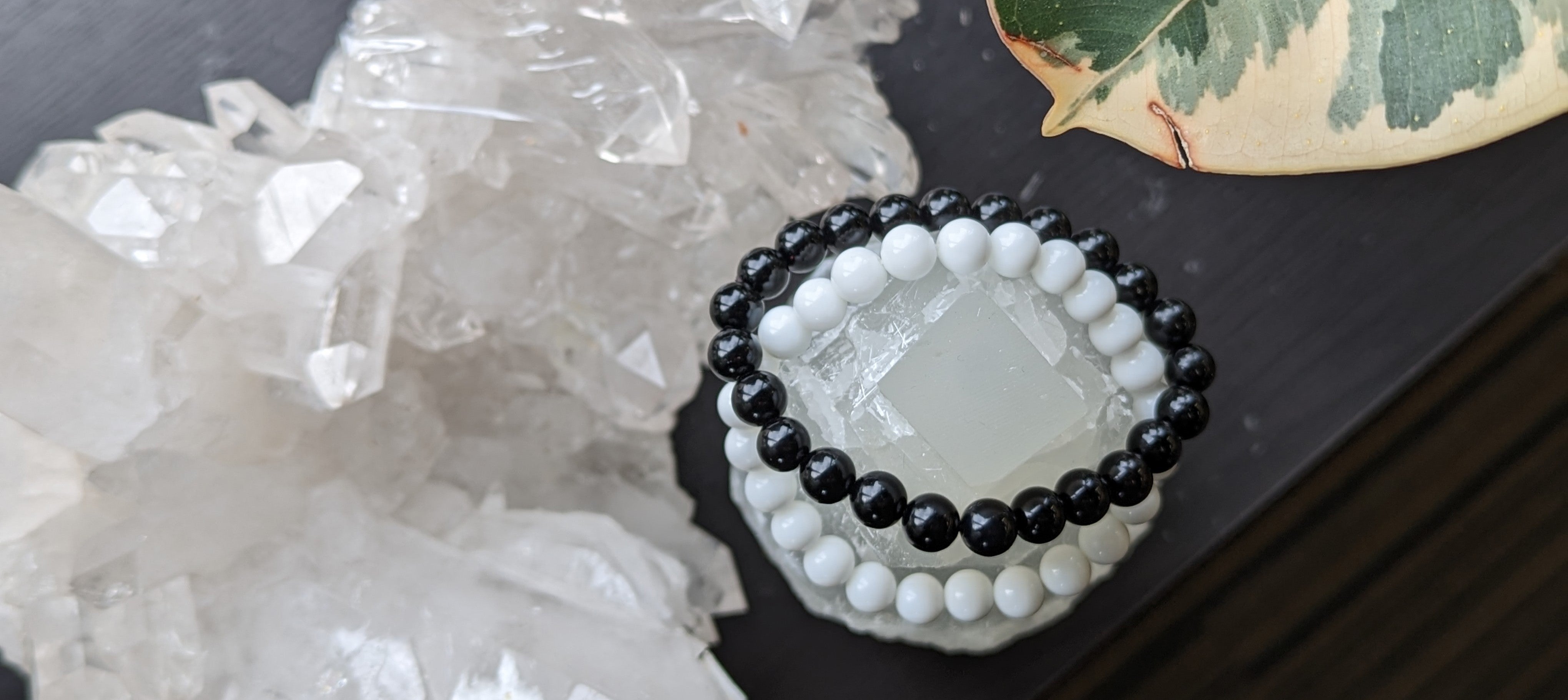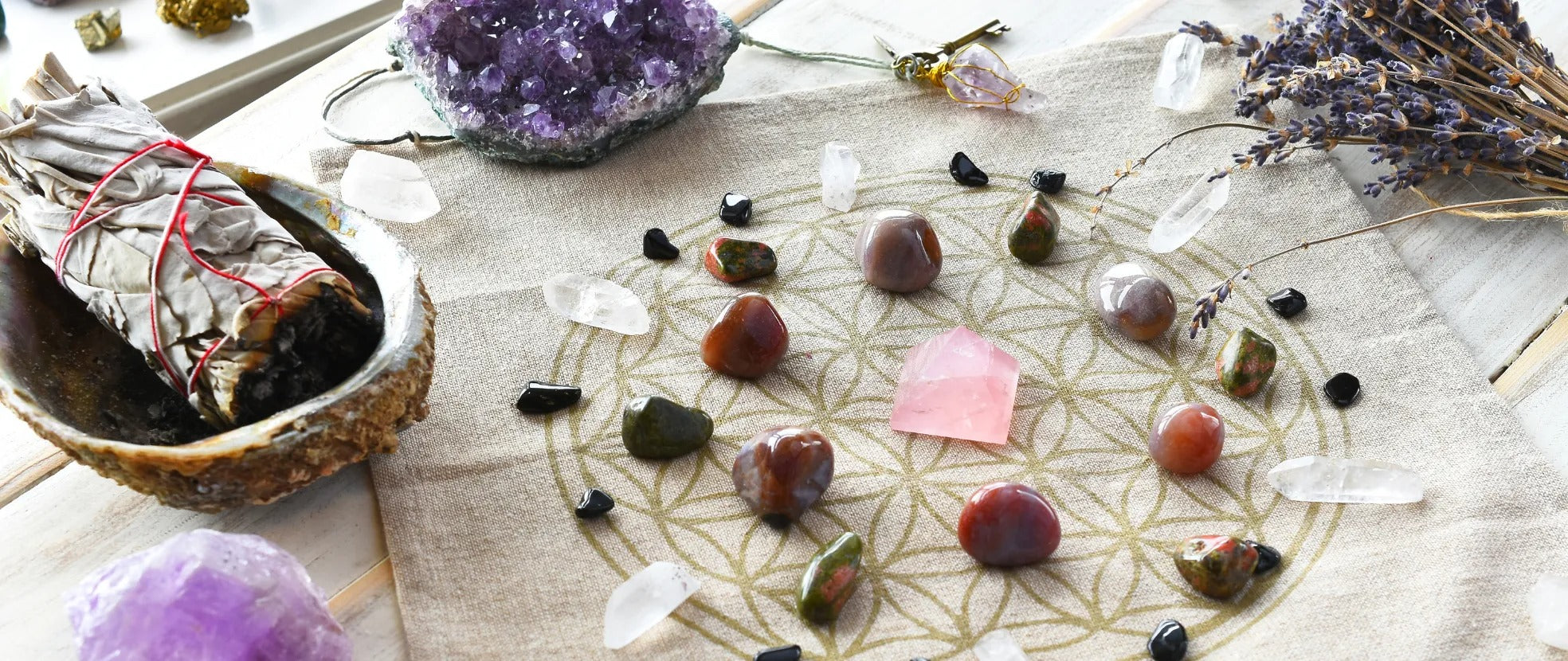Originally Published: Dominic Yasay, September 24, 2021
Updated: Ashley DeCator: June 16, 2023
Eudialyte is a type of complex silicate mineral, called cyclosilicate, that forms in rocks with a coarse texture. What makes it stand out is its pretty pink to bright red colours that look like ripe plums.
It's not easy to find, which is why collectors love it. It's also a minor ore of zirconium, so it has some practical uses on top of being visually stunning. When it comes to jewellery, eudialyte is carved into different items like cabochons, pendants, rings, spheres, and carvings. People in the jewellery industry really enjoy it.
In the world of metaphysical healing, eudialyte is believed to bring balance to your physical and emotional well-being. It's like a little helper that helps you find that sweet spot of harmony. It's known for its calming and uplifting qualities.
The Physical Properties of Eudialyte
Eudialyte forms particularly in alkaline igneous rocks, especially in rocks like nepheline syenites. It often grows these long and prismatic semi-transparent crystals that are embedded in a mix of white, black, and grey colours, all of which make the vibrant hues of eudialyte all the more stunning. With colours like pinks, reds, and magentas as the main attraction, it’s truly a geological work of art. However, eudialyte still has browns, greens, and violets, which are just as pretty as the more vibrant pinks and reds.
Eudialyte sometimes even teams up with black tourmaline. When you spot eudialyte specimens that have a sweet carmine colour with hints of green and black, they go by the name "Dragon's Blood" according to Russian gem dealers.
According to the Mohs hardness scale, eudialyte sits at a 5 to 6, which means it can get scratched pretty easily by glass or a knife blade. Eudialyte can also range from being transparent to opaque.

The Metaphysical Properties of Eudialyte
Eudialyte is commonly used as a protection stone since it’s very good at warding off those negative vibes and helping you shake off any bad juju. Eudialyte is also known as a grounding stone. It’ll help you with keeping your focus on point and staying committed to your goals. It helps you maintain that perfect balance of energies in your life and brings your intentions to life. When you have eudialyte in your daily routine, it acts as a constant reminder of your own capabilities to make your dreams a reality.
When it comes to chasing your dreams, having that rock-solid self-love and confidence is key. Eudialyte is just the rock to do both jobs! It will help to remind you to always believe in yourself, no matter what.
Eudialyte is also able to help you heal your chakras, especially when it comes to the heart chakra. It can feel like a total cleanse and activation for your heart energy centre. When your heart chakra is in the zone, you can tap into a whole new level of joy, fulfilment, and excitement.
Have you been feeling a bit hesitant to dive into the deep end of your love life? No worries, eudialyte has got your back! This rock can help crank up your libido and help you let go of any inhibitions holding you back. This stone is like a cocktail of confidence and passion ready to help you love more and better. Plus, it's believed to shake off those negative mindsets, attitudes, and behaviours, making way for a healthy and fulfilling relationship.
If you’re looking to tap into its powerful vibes, keep a eudialyte stone in the south area of your home. This move brings in all the good stuff you’ve been looking for—warmth, enthusiasm, happiness, and even a touch of enlightenment. If you're looking to attract some good luck and prosperity to your business, give it a home in the south area of your office. It'll act like a magnet for all the good business vibes.
The Lore of Eudialyte
The legends surrounding eudialyte are incredibly captivating and have stood the test of time. It's no wonder that this stone is widely celebrated and cherished for its rich history.
The indigenous Sami people, a Finno-Ugric group living on the border of the Kola Peninsula, have a unique name for eudialyte. They call it “Sami Blood” or “Lopar Blood” because they believe it originated from the blood of their fallen soldiers.
According to an ancient Norse legend, there was a fierce battle between the Sami warriors and Swedish warriors. Tragically, the Sami soldiers lost their lives, and their blood spilled across the battlefield. Miraculously, these droplets of blood crystallised and transformed into eudialyte stones, symbolising their sacrifice and bravery.
Since then, it became a tradition for some Sami soldiers to carry or wear a eudialyte stone as a protective talisman during combat. They believed it could grant them invulnerability against attacks and boost their courage. The stone was said to represent strength and fearlessness on the battlefield.
The History of Eudialyte
The name eudialyte is originally from the Greek words eu and dialytos, which roughly translates to decomposable and easily dissolved. That's because this mineral can quickly dissolve when it comes in contact with acid.
Back in 1819, the German chemist Friedrich Stromeyer (the same person who discovered cadmium) stumbled upon eudialyte in the Julianehaab district of Greenland. Nowadays, a lot of the eudialyte supply comes from the Kola Peninsula up in Russia's north. However, it's also found in some pretty interesting places like Canada, Norway, Madagascar, and the USA.
Throughout history, eudialyte has been used as a minor gemstone, but it's rare and doesn't have the best crystal structure. That's why it's popular among collectors. This gorgeous rock is packed with calcium, sodium, zirconium, iron, manganese, and even some rare earth metals. With all those minerals, eudialyte is sort of like a timekeeper for geoscientists. They can use it as a geochronometer to study the age and origin of host rocks.

Sources:
Houston, D. (n.d.). Eudialyte: Meanings, Properties and Powers. Crystals&Jewelry.com. Accessed at https://meanings.crystalsandjewelry.com/eudialyte/
Eudialyte. (n.d). Mindat.org. Accessed at https://www.mindat.org/min-1420.html
Eudialyte Value, Price, and Jewelry Information. (n.d.). International Gem Society. Accessed at https://www.gemsociety.org/article/eudialyte-jewelry-and-information/
Eudialyte. (n.d). The Crystal Council. Accessed at https://thecrystalcouncil.com/crystals/eudialyte
King, H. (n.d.). REE - Rare Earth Elements and their Uses. Accessed at https://geology.com/articles/rare-earth-elements/
de Almeida, M. (2016, August 19). Eudialyte - A Precious Stone of Many Names. Access Gems. Accessed at https://accessgems.com/eudialyte/
Nepheline Syenite. (n.d.). Britannica. Accessed at https://www.britannica.com/science/nepheline-syenite





